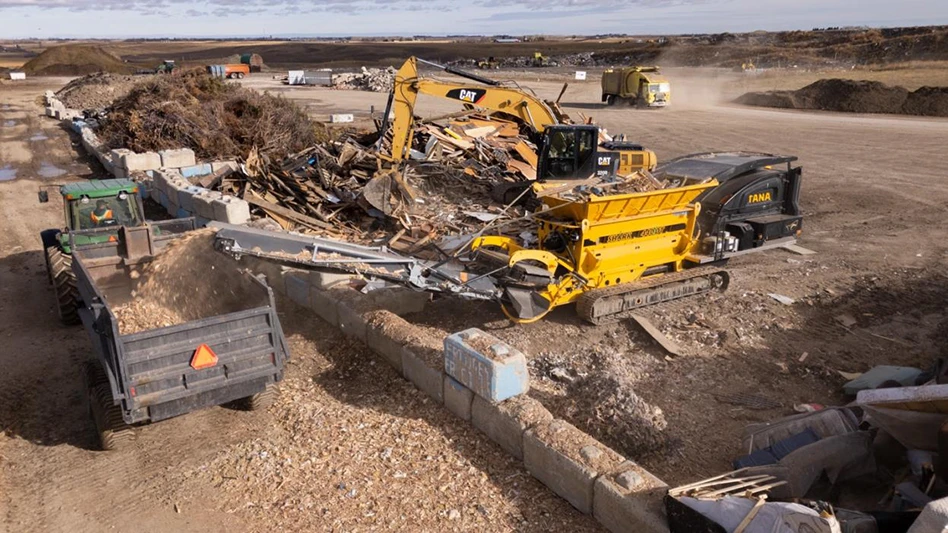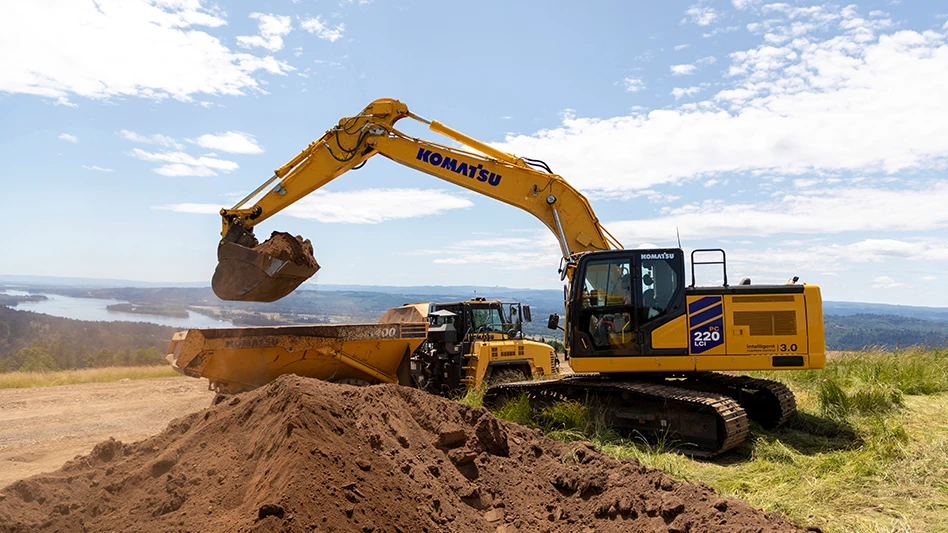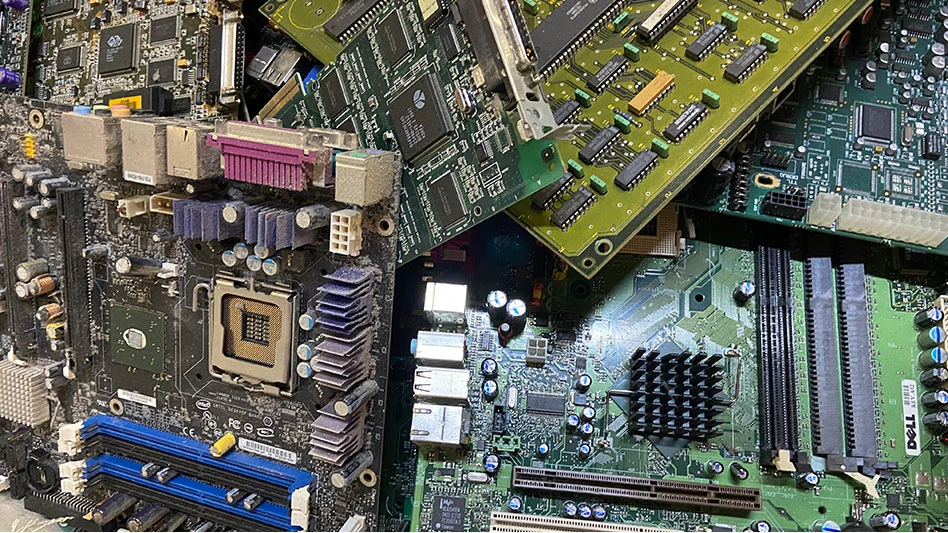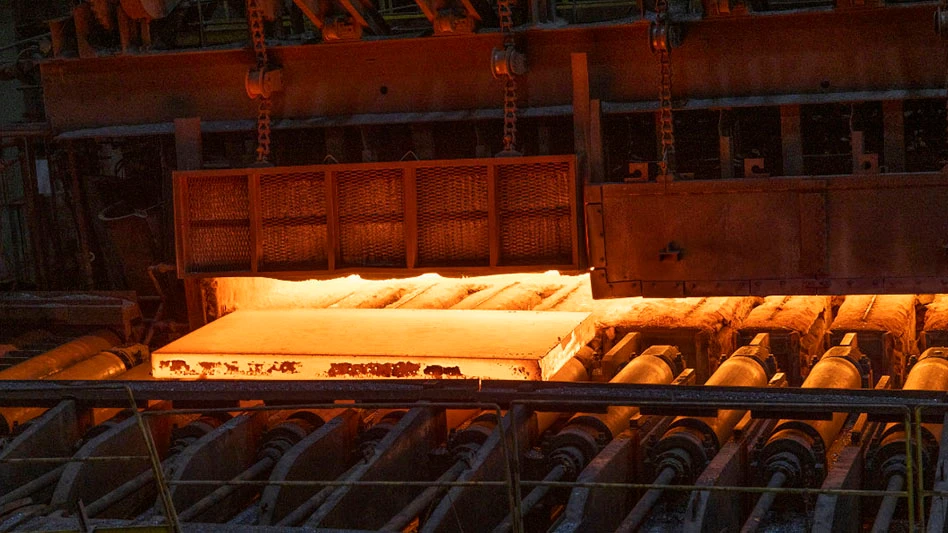Aluminum, more than most other nonferrous metals recently, has been the recipient of significant attention from the financial press. From the Wall Street Journal’s recent report that vast supplies of aluminum have been inventoried at a remote Mexico warehouse by a Chinese company to avoid tariffs, to the announced breakup of Alcoa into two stand-alone companies (Alcoa and Arconic), aluminum has received plenty of press coverage.
At the recently concluded ISRI Commodities Roundtable 2016, held in Chicago Sept. 19-21, these issues, among others, were discussed as a panel of speakers sought to provide attendees with some answers as to what the short- and long-term future of aluminum scrap will be.
Matt Kripke, president of Toledo, Ohio-based Kripke Enterprises and moderator of the aluminum panel, kicked off the session by highlighting the fluctuations in the Midwest Premium price. After bottoming out in the fall of 2015 at less than 6 cents per pound, the Midwest Premium has rallied a bit and now sits at around 6.25 cents.
In his remarks, Kripke also highlighted the significant decline in aluminum scrap activity, especially on the export market, over the past several years. “This one is not rosy,” Kripke noted. From a high of 1.5 million metric tons of aluminum scrap exported from the United States to China in 2011, “we are on pace to do about one-third of that this year.”
Following Kripke’s remarks, Fred Penha with CME Group, a Chicago-based derivatives marketplace, discussed steps that scrap metal recyclers could take to lessen their exposure to the volatility in the aluminum markets.
After pointing out the steady growth in aluminum hedges on the CME, he offered attendees a strategy to play a more conservative approach and avoid the volatile price swings that seem to be a constant in many parts of the nonferrous market.
Providing a thorough, global outlook for primary and scrap aluminum was Mike Southwood, a senior consultant with the research and consulting group CRU Group. His remarks touched on a host of issues impacting global aluminum markets, including the aforementioned Alcoa split, the economic impact that Brexit will have on global markets, the proposed acquisition of Aleris by a large Chinese aluminum producer, the rapid growth in the Chinese aluminum industry and the use of aluminum in the automotive sector.
When Alcoa's split is complete, Alcoa will handle the upstream aluminum business, while Arconic will focus on downstream business and value-added materials. While the two companies will initially work cooperatively, at some time Arconic will start to buy material on the open market, which could have a significant impact on aluminum scrap markets, Southwood said.
As for the impact that the Brexit vote will have on the aluminum market, Southwood noted that it will have a negative impact through most of Europe for 2017 and 2018, though it will be modest. However, the economic impact in the U.K. will be more significant.
With the potential of greater financial market volatility, there likely will be a flight to the safe haven of the U.S. dollar, which could keep the currency fairly strong, making scrap from U.S. sources more expensive. “A stronger dollar would make it more bearish for aluminum prices,” Southwood added.
The role of China. A recent move by the China-based aluminum producer, China Zhongwang Holdings to acquire Aleris, a Cleveland-based aluminum rolling firm with 14 locations in the United States, Europe and China, has generated a significant amount of interest and debate.
“By buying Aleris, Zhongwang obtains one of the largest aluminum rolled products companies in the world outside China,” Southwood said. While Aleris has more than a dozen facilities, he pointed out Aleris' plant in Germany is the “crown jewel” for the company. Additionally, “Aleris is ramping up a plate mill similar to its facility in Germany in China.”
Although Aleris and China Zhongwang have indicated that the acquisition should be closed by the first quarter of 2017, more recent developments may generate more questions, according to Southwood. In addition to reports of massive amounts of aluminum cast being stored in Mexico to avoid high tariffs, there also have been published reports claiming that a company in the Philadelphia area with alleged familial and business ties to China Zhongwang has been harboring aluminum semis on the East Coast. This most recent allegation has caused the U.S. Department of Commerce to open an investigation to determine whether or not the company has been shuttling aluminum to avoid steep tariffs, according to the Wall Street Journal.
In response to these actions, as well as the potential takeover of a U.S. company by a Chinese business, a number of groups, including the Aluminum Extruders Council and the United Steelworkers, have expressed concern over the impact this would have on the aluminum market, Southwood pointed out.
Despite the potential problems that may crop up with the Aleris/Zhongwant Holdings deal, Southwood said that there will definitely be mergers and more consolidation in the Chinese aluminum industry as these companies look to acquire rolling companies in both China and abroad. “It could be a more outward looking Chinese aluminum industry,” Southwood said.
These deals also could be a strategy by Chinese companies to get the technological infusion as they are seeking to tap the automotive and aerospace industries. “Many Chinese companies are looking to gain a foothold in aerospace and the automotive sector,” he said.
At the same time, some companies in need of an infusion of capital may decide "if you can't beat them, join them," Southwood added.
As for market conditions, he provided statistics showing an oversupply of aluminum on the global market. “CRU forecasts Chinese aluminum demand to stand at 6.1 percent year over year in the third quarter, which will slow to 4.6 percent in the fourth quarter.”
This slowdown in demand is indicative of the fading impact of the stimulus program that the Chinese government introduced earlier. “There are signs that aluminum consumption in China is starting to slow and demand will ease during the rest of the year. Monetary investments will wane and investments in construction and industrial sectors will drag,” he added.
Meanwhile, what could be a cause a sharp increase in the aluminum supply as CRU forecasts production of aluminum in China will increase by 4 percent for the third quarter of this year and increase by 11 percent in the fourth quarter.
“Smelter restarts in China will continue to progress. As such, the (aluminum) market is awash in material. The pace of growth in capacity will slow, but will still rise by 3.9 million tons by 2020,” Southwood noted.
A long-term concern. In regard to aluminum scrap, Southwood noted that exports of scrap aluminum from the United States to China climbed 13 percent per year between 2007 and 2011. However, after peaking in 2011, demand for aluminum scrap from the United States to China has reversed course, with exports dropping by 12.7 percent per year from 2011 to 2015. The net result, he said, is that the United States shipped 42 percent less -- around 600,000 metric tons -- aluminum scrap to China in 2015 than 2011.
This was not just an anomaly as overall imports of aluminum scrap to China dropped. The reason? China has aggressively sought to boost its internal collection network so it becomes less dependent on the global market. The result is that Chinese post-consumer scrap consumption has increased rapidly, with Chinese scrap supply almost doubling between 2008 and 2015.
While acknowledging that actual numbers are difficult to come by, Southwood did say that one source in China told him that the country increased its secondary scrap aluminum collection from 2.1 million metric tons in 2008 to 4.3 million metric tons in 2014.
Finishing up the aluminum session, Larry Snyder with United Scrap, a scrap metal recycler based in Cicero, Illinois, provided an upbeat, yet cautious outlook for the metal. In his remarks, Snyder called for scrap dealers to be cautious with their trading activities. If dealers are amassing large amounts of scrap on site they are becoming speculators, which can be a very risky proposition.
As for end markets, Snyder noted that while the automotive sector continues to be a bright spot for the aluminum sector, how long will that continue to be the way.
On a more positive note for the scrap aluminum market, he said that the inevitable decline in ferrous prices through the end of this year will reduce the supply of aluminum on the market. The reason is that with lower ferrous prices auto shredders will not be running as much, which means less zorba will be generated and there will be less aluminum scrap on the market. “There will be a crimp in aluminum,” Snyder said.
At the same time, inclement weather in the East and Midwest toward the end of the year may mean some shortages of aluminum scrap throughout a good chunk of the market until the spring. If this happens, there may be an uptick in demand for secondary aluminum.
However, he concluded, “My philosophy is if you have more than a load of scrap you have too much. I am not looking for a home run or to get killed. Don’t speculate. As a scrap dealer use caution. Turn your inventory over.”
In a series of follow up questions, Snyder said he felt that consolidation in the scrap market would continue. However, he questioned whether large publicly traded companies would be active participants going forward. At the present price points, he questioned how these public companies can make the deals while dealing with the overhead on the corporate level. “You can’t afford two floors of Manhattan real estate with auditors and lawyers, etc., and the fixed overhead at these (scrap) prices.”
He continued, “We make decisions by the minute. Publicly traded companies can’t afford that.”
Latest from Recycling Today
- Plastics market turbulence could continue in new year
- EGA Spectro Alloys donates to 30 nonprofits, charitable initiatives
- Signature Systems earns ISO certification
- Poll claims companies worried about future packaging materials shortages
- US EAF mills are running strong: Navigate Commodities
- Survey claims majority of Americans support DRS
- The ESG time trap: How companies fall behind before they ever begin
- Commentary | Recycling: An equation of supply and demand





